
Create an Amazon Wedding Registry
Try Amazon Fresh Create an Amazon Wedding Registry |


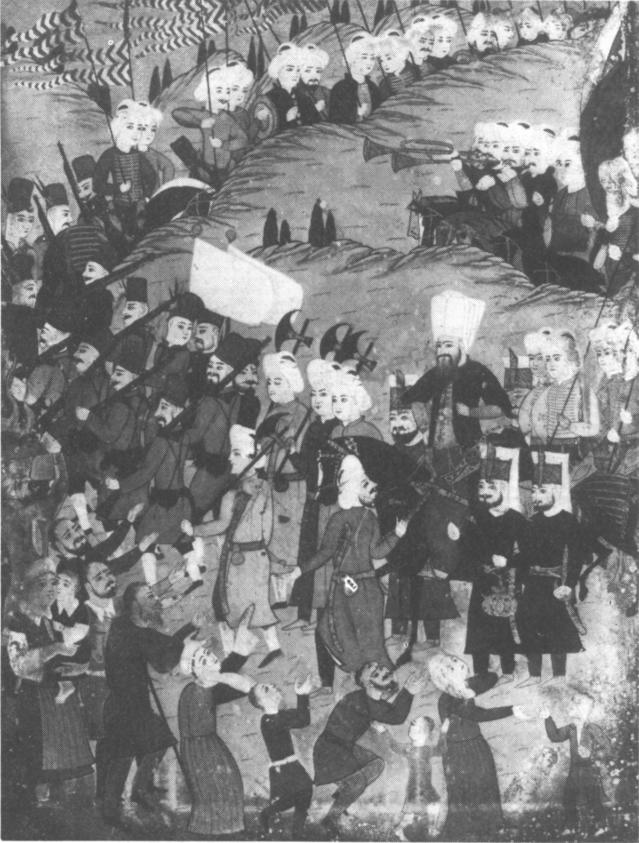 |
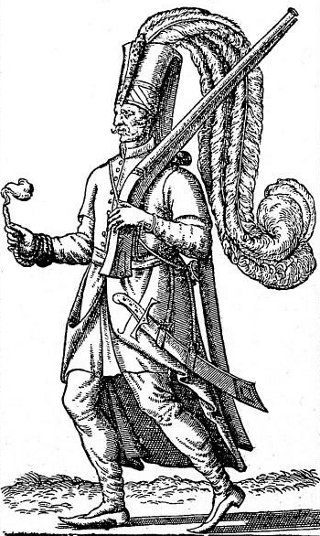 Janissary - obviously a veteran or 'hero' by his plume! From Nicolay's Peregrinations faites en Turquie, 1577. |
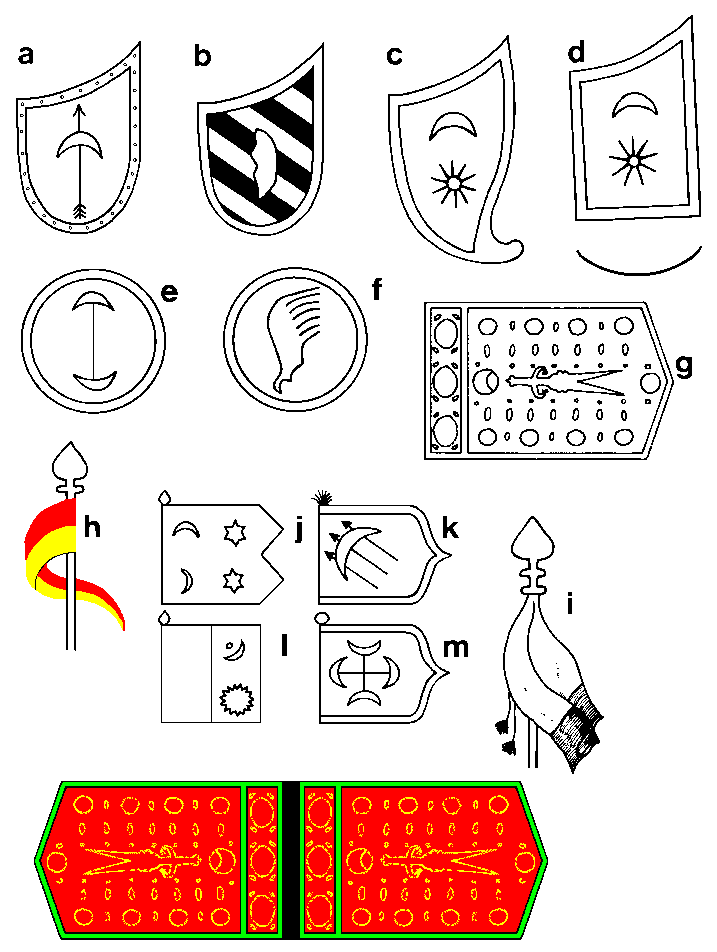 a-f typical Turkish shield patterns. d shows plan as well as top view. g Sanjak, or Turkish battle flag. Scarlet silk, green border, gold decorations. The medallions bear the names of Mohammed and various Caliphs: the thing in the middle is Zulficar, the legendary sword of Mohammed's son-in-law Ali. h red and yellow cavalry standard from first half of 17th Century. i flag from early 17th Century painting of Turks in Persia. Flag is red with a black sector at bottom and is probably rectangular; Tassels are green. j and l Turkish standards captured by Spanish at Lepanto. Colours not known but would use the 'Muslim colours' red, green, white or black. Crescents indicate Ottoman origin. k and m flags from a 1582 print of the Siege of Malta. n Guard cavalryman, probably a member of the Muteferrika or the Mulazims. Plumes - white, black. Cap - top white, bottom gold. Outer coat - scarlet or purple. Inner coat - purple, light blue or black with gold frogging. Sash - red, gold decoration. Trousers - purple or light blue. Shoes - black. Scabbard - black and gold. Stirrups - gold. Saddlecloth - black or purple and gold. Harness - all red with gilt fittings. o Solak of the Sultan's Guard, 1580s. Dress probably white, gold helmet and sash. p Turkish 15th Century arquebusier. Turban white, cap green, shirt green and white stripes, coat red, trousers green and slippers red. He has a sash round his waist with a sort of leather stomach-protector in it, visible behind the powder horn. q Turkish artilleryman, based on a print of the Siege of Malta. He might be Europeanised, but caps with five turned-up points similar to this were worn by some palace functionaries, and as the Tapdjis were part of the Household they may have worn this uniform. r alternative cap styles shown in the same print. (Drawings by Ian Heath).
a-f typical Turkish shield patterns. d shows plan as well as top view. g Sanjak, or Turkish battle flag. Scarlet silk, green border, gold decorations. The medallions bear the names of Mohammed and various Caliphs: the thing in the middle is Zulficar, the legendary sword of Mohammed's son-in-law Ali. h red and yellow cavalry standard from first half of 17th Century. i flag from early 17th Century painting of Turks in Persia. Flag is red with a black sector at bottom and is probably rectangular; Tassels are green. j and l Turkish standards captured by Spanish at Lepanto. Colours not known but would use the 'Muslim colours' red, green, white or black. Crescents indicate Ottoman origin. k and m flags from a 1582 print of the Siege of Malta. n Guard cavalryman, probably a member of the Muteferrika or the Mulazims. Plumes - white, black. Cap - top white, bottom gold. Outer coat - scarlet or purple. Inner coat - purple, light blue or black with gold frogging. Sash - red, gold decoration. Trousers - purple or light blue. Shoes - black. Scabbard - black and gold. Stirrups - gold. Saddlecloth - black or purple and gold. Harness - all red with gilt fittings. o Solak of the Sultan's Guard, 1580s. Dress probably white, gold helmet and sash. p Turkish 15th Century arquebusier. Turban white, cap green, shirt green and white stripes, coat red, trousers green and slippers red. He has a sash round his waist with a sort of leather stomach-protector in it, visible behind the powder horn. q Turkish artilleryman, based on a print of the Siege of Malta. He might be Europeanised, but caps with five turned-up points similar to this were worn by some palace functionaries, and as the Tapdjis were part of the Household they may have worn this uniform. r alternative cap styles shown in the same print. (Drawings by Ian Heath). |
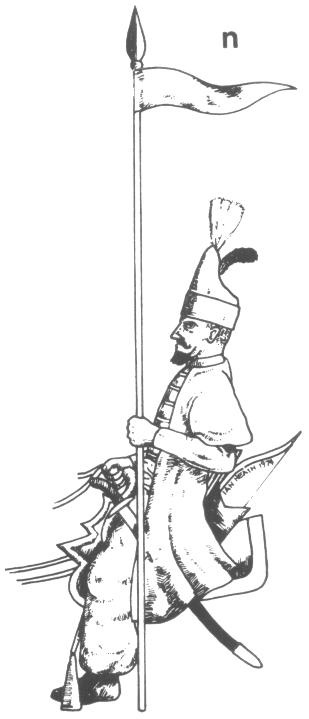 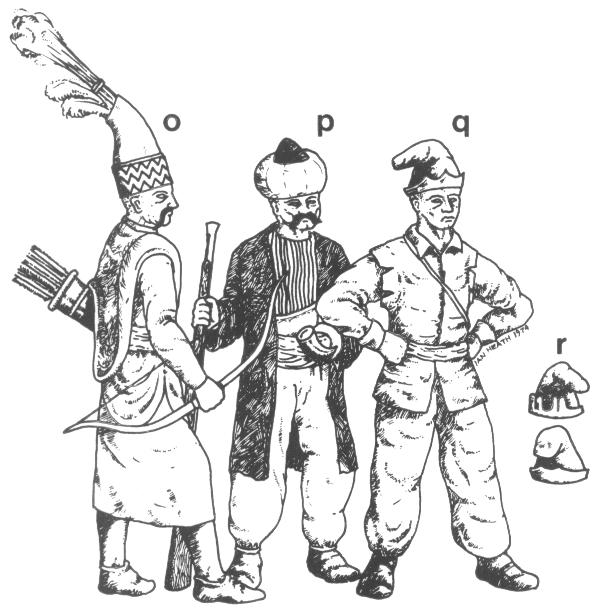
|
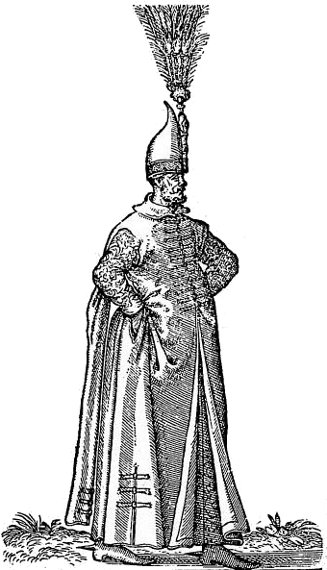
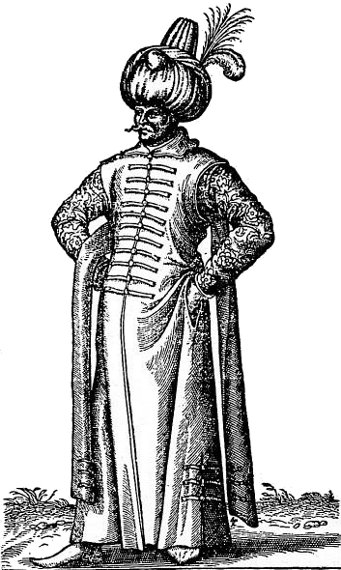
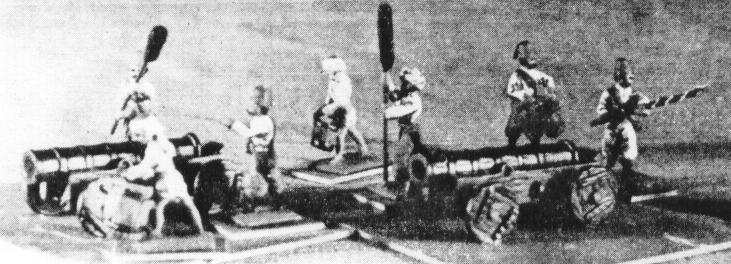
|
Previous: Part 10: The Turks. Part 1: the Spahis Next: Part 12: The Scots Return to Contents of Renaissance Warfare by George Gush (Airfix Magazine Articles) See also Ottoman Illustrations of Costume & Soldiers |